
You may also be interested in this UKC Review of Rope Bags by Alan James, Mick Ryan and Chris Craggs.
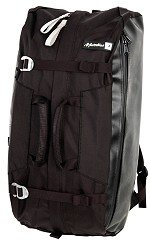
- Duffel-style opening provides easy access to your gear
- Tuck-away shoulder straps and waist belt are perfect for travel
- Unbreakable aluminum buckles - guaranteed for life!
- Burly construction with 'Durathane' and ballistics fabrics
- Dual external side-pockets
- Dual carry handles
- Dual compression/lash straps
- 41 L
- 1.2 kg
- 711 mm x 330 mm x 254 mm
- Colour: black
- More info on the Metolius Website
You don't climb with a crag pack. They're for getting your gear from the car to the bottom of a route and keeping it organised and accessible as you move along a cliff through the day doing routes. They are well known in sport climbing circles and some, like the very reasonably priced Beal Combi, are really just rope bags with rucksack straps and a little extra space in them. For trad climbing though you need a bit more than a rope, 12 quickdraws, sun cream and rock shoes.
So why buy a crag pack, what features do they offer and which models are good for the trad climber with a full rack of gear - in particular the UK trad climber for whom a shell jacket, fleece and hat are often as important to pack as spare chalk? Myself and a couple of climbing mates tried out five different crag packs and the reviews below tell you what we think.
Why buy a crag pack?
One of the biggest trends in recent years amongst mountain climbers has been lighter and lighter gear. Rucksacks have got lighter just like most other kit and many people are climbing with sub-kilo bags for their mountain adventures. Of course lighter means less wear resistant so most people won't want to use those packs for dragging their kit to the crag for a day of single pitch climbing. This is where crag packs come in.
What features do they offer?
Most crag packs have some sort of zip opening allowing them to open up holdall-style, meaning you can just as easily get things out from the bottom as from the top, just the thing when you know you'll need some RPs for the next route but won't need big cams. Many are also designed so that they can be carried hold-all style between routes without everything falling out, and most seem to have extra pockets and fixed gear loops inside to help keep things organised. Many come with some sort of rope tarp to take care of your cord, too.
Which crag packs did we like best?
Best of the Test: The Arc'teryx Miura 50. Yes it's rather expensive, but this is a cleverly designed and beautifully made pack that, we thought, has the best back system of all reviewed. A huge capacity and design that's very easy to pack makes this an ideal pack for the trad climber lugging a big rack and lots of spare clothes and gear to the cliff.Best Value: The Black Diamond Demon Duffel. Available for just a bit over 50 quid and coming complete with a perfectly good rope tarp, this simple zip-up pack is a pleasure to use and has loads of space to cram in all your kit. Not the best for carrying heavy loads with a simple back, but fine for short trips.
The Mammut Neon Gear also deserves a mention for being stuffed with clever features, a clever design and good back system.
Summary Table
| Reviewed Crag Packs | Size (litres) | Weight (g) | RRP | Dirty back potential? | Rope tarp? |
| Arc'teryx Miura 50 | 50 | 2200 | £130 | some | no |
| Black Diamond Demon Duffel | 42 | 1000 | £59.99 | yes | yes |
| CAMP Rox Plus | 45 | 1060 | £65 | yes | no |
| Grivel Rocker | 45 | 2130 | £100 | no | yes |
| Mammut Neon Gear | 45 | 1240 | £105 | no | yes |

Arc'teryx Miura 50
RRP: £130
For more info: www.arcteryx.com/miura50
Take a gulp and ignore the price for a second, as we thought the Miura 50 was the best trad crag pack of the test. Arc'teryx says this is the pack for the climber “who want all their gear inside the bag”, and I agree. Without looking too huge, this pack just eats gear. I can put a rope and all the technical stuff inside along with a water bottle, helmet, SLR camera in a bag and other sundries. I put valuables and little things I might want during the day in the top pocket, and then there is still the front pocket for extra clothing and a flask of coffee. There is also the option to have a water bladder inside the pack and two interior gear loops to help organise your gear.
To carry all this stuff, the Miura has more of a 'real' back system than most of the other packs in this test: a non adjustable system (3 sizes available) making it strong, simple and very comfortable to carry.
Accessing all the gear is a breeze with what Arc'teryx call their drawbridge system - un-roll the top and then peel the front of the pack down - but with the top open and the side zips done up, you can still pack it 'classic style', i.e. just dumping everything in and pushing it down to the bottom.
Despite being far from cheap, people keep buying Arc'teryx because generally you can see the good design and high quality in their products. The Miura 50 is no exception: the inside of the pack is yellow meaning you can find everything easily. The zips are huge and chunky and look like they will work year after year (a friend has had a smaller Miura for a number of years, using it for all his climbing and it is still in perfect nick). The roll-top closure is simple and elegant but works perfectly. The pack comes with detachable straps that fit in various places to hold a rope on the outside if necessary. There are even little tape loops at the bottom of the zips for your thumbs so that as you pull the zip closed your other hand tensions the bag to make sure the zip can close as smoothly as possible. The Miura 50 just oozes quality in construction and design.
Yes it is expensive, and considering it is the most expensive pack on test, it is one of the two that doesn't come with a rope tarp (Arc'teryx make a rope bag designed to fit inside it that looks great but again is eye-wateringly expensive). But if cragging days where you want a pack to take your gear to the cliff but not up it makes up the majority of your climbing, then this lovely pack may well be a worthwhile investment.
Arc'teryx Miura 50 Demo Video:
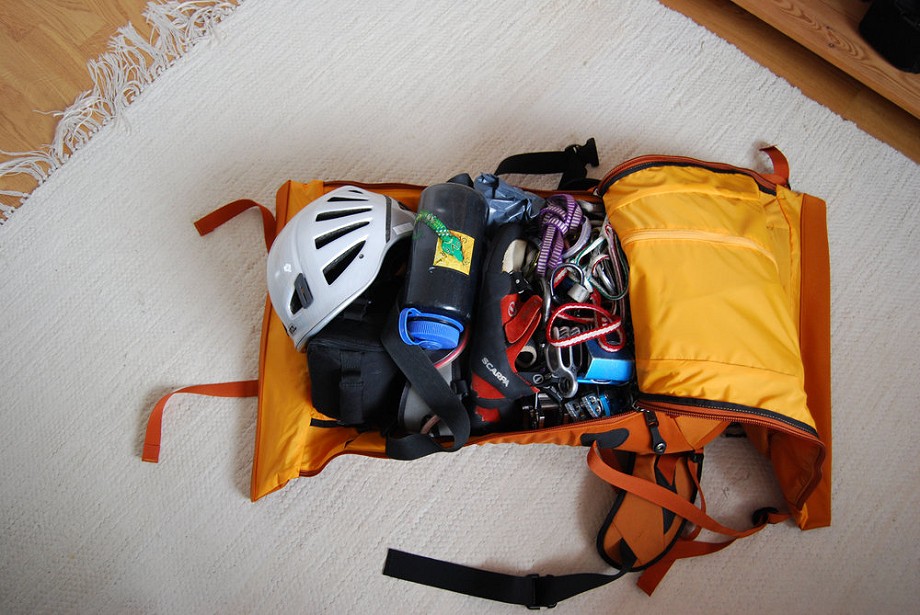
Black Diamond Demon Duffel
RRP: £59.99
More info: www.blackdiamondequipment.com/demonduffel
In retrospect BD might say that their 50-Caliber is their real trad crag pack designed for eating racks of triple cams to fist size: big, burly and taped up ready for endless 5.10+ crack madness. In comparison the Demon Duffel is more of a lithe, broccoli-snacking sport climber's pack, where the only tape will be on the middle finger from pulling on that mono too much on your Ceuse project. OK that's a bit of an exaggeration! It's the smallest pack tested but still a fairly generous quoted 42 litres. And, actually, all of us who used the Demon Duffel thought it was great.
For one thing, it's cheap: shop around and you'll get it for a bit over fifty quid, and you get a perfectly good rope tarp with the pack for that. Secondly, it's simple and light: just one big zip up the front and one zipped pocket inside for your valuables. One mate took it to Font as it could be slipped inside his pad when not too stuffed. Another friend took it on a non-climbing trip to Russia, just because he said it was the perfect size, and could either be carried as a holdall (the shoulder and waist straps all tuck away) or carried as a pack.
There's not much to dislike about the Demon Duffel. It is completely dependent on its zip for closure, and again it isn't the chunkiest of zips, but unlike some designs it runs in a pretty straight line which will help its longevity. There is also next to nothing for attaching things to the outside of the pack - you could clip your helmet to the grab straps but that's about it. Hence the big volume is important because basically everything needs to fit inside.
Finally, like others, you have to put the back system down in the dirt which isn't ideal in muddier climes. But overall the Demon Duffel is great: simple, unpretentious, value-for-money and perhaps the perfect second pack for cragging; allowing you keep your lightweight alpine pack in good condition for those trips to Lochaber or Chamonix where you need to strap spikey things to the outside.
CAMP Rox Plus
RRP: £65
More info: www.camp-usa.com/roxplus
Overall, the Rox Plus was a bit of a disappointment. This was in part my own fault having asked to try one after seeing a picture of what turned out to be last year's model on CAMP USA's website. This showed a simple pack with a zip front and roll-top closure that looked just the thing for stuffing trad gear into. The pack that arrived has an interesting T-shaped zip design but not the roll-top closure. Nevertheless, the Rox Plus is bigger than it looks, taking my test rack, rope and gear easily.
The pack is simple and light with a pretty minimalist back system, but is fine to carry with a medium load. The mesh pockets on the side are great for stuffing your litter or smelly rock shoes to give them an airing. The T-zip design makes opening the pack up to find little things at the bottom easy - just what you want with a crag pack. It has a couple of the obligatory-for-cragpacks internal gear loops, although CAMP seem to treat them with same scepticism that I do, as they are rather simple half-hearted designs. The lid has a pocket and there are two little zip pockets on the side - all perfect to make sure you don't loose your keys/ wallet/phone.
So, what's not to like?
Simply, the bag is just not as well finished as others. There are various loose threads and even the embroidered brand name started unpicking quickly. Most obvious was the useless chest strap. This is one of the new-ish designs where a plastic rod is inserted into the material of the shoulder strap and then a plastic fixing holding each side of the chest strap slides up and down on. On one shoulder strap the plastic rod is just too short, meaning that when you breathe and the shoulder strap moves slightly, it just pops off the top.
I fixed it by sewing loops to make a stop easily enough, but customers shouldn't be expected to have to fix their new gear. The zips that CAMP have used are rather lightweight, which makes me wonder how well they will last, although on the other hand the design doesn't make them go round sharp corners, which is where zips often fail. And, finally, while the price isn't too much, it doesn't come with a rope tarp unlike the slightly cheaper BD Demon Duffel.
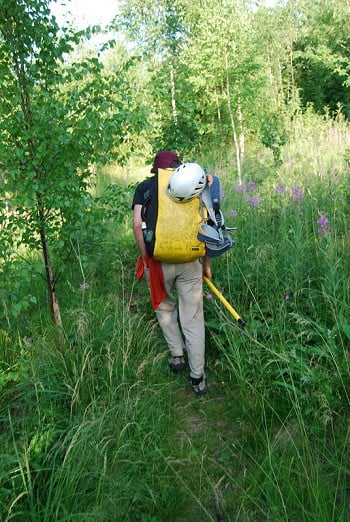
Grivel Rocker
RRP: £100
For more info: www.grivel.com/rocker
The Grivel Rocker knows it's a crag pack - it really has no pretensions at all to being 'alpine'. The easiest way to describe it is like a suitcase with rucksack straps on the back. The rucksack straps don't hide away, otherwise it would look like rather like one of those travel backpacks favoured by itinerant colonials in backpackers' hostels everywhere.
The pack completely zips opens meaning you pack it like a suitcase. Although when really stuffing it I've found filling it up, closing the pack, holding it upright and letting gravity settle things a little mean on re-opening it there is often a bit more space produced. Nevertheless despite the claimed 45 litres it feels a little smaller than the other packs on test - perhaps due to the rigidity of design meaning it is harder to stuff full.
The front of the pack that will be laying down in the dirt is made of super tough vinyl in cheery yellow with jolly little cartoon climbers on it. Some might not like the aesthetics but I'm quite partial to yellow myself. The material appears pretty indestructible. The zip is also very chunky and looks hard-wearing, important for a bag totally reliant on the zip for closing. Inside the bag there are many pockets of varying size, from pen holders (clearly you will be ticking off your successful redpoints in the topo) through to mesh pockets that would take shoes or your chalk bag.
The Rocker also comes with perhaps the best rope bag of all the packs on test. Rather than just a simple tarp with a couple of loops, the tarp rolls up into a zip up bag, which fits neatly into the bottom of the Rocker. However, all of us who tried it found that doing this meant some of the internal pockets become rather redundant. There is a double daisychain arrangement on the top of the pack meaning you could carry your rope on the outside but you would need to find your own straps to attach it there.
The back panel of the pack is very stiff and, combined with a big lumbar pad, makes carrying the Rocker feels a bit odd. Having said that it's not uncomfortable by any means. The pack has a more serious waist strap than others tested and, while not up to the Miura's level, this helps take some of the weight. Overall, a very robust feeling bag that is easy to use, but perhaps better for sport climbers. It felt stuffed trying to get all my trad paraphernalia in there.
I get the feeling it's a bag that will last well for many years and at £100 it could be a good investment for the sport climber who does some trad once in while. Also Grivel (like Mammut) have designed a crag pack where it's not the back system that gets put down in the mud.
Mammut Neon Gear
RRP: £105
More info: www.mammut.ch/neongear
The 45 litre Neon Gear is a very cool pack. Basically, it is a box with rucksack straps, which in some ways is exactly what you want in a crag pack. It opens in two ways: either the top zips open, allowing you to sit it on its base and just drop all your gear into it, allowing gravity to do the packing. But then when you want something, the entire back panel unzips, allowing you to fish out anything regardless of where it ended up in the pack. The shoulder strap are also designed to carry the bag holdall style when you have the back panel open, i.e. moving between the base of routes close together.
Mammut have designed in loads of features - some arguably more useful than others. There are internal and external lid pockets to keep your valuables safe. A big mesh pocket on the back panel seems to be for rock shoes. The pack has the obligatory internal gear loop; of course you can clip your belay device to this, but it then tends to catch as you take things in and out. The bag has a detatchable chalk bag bag: cute, although I've always managed just fine putting mine in a plastic bag! Finally the bag has a rope tarp - this is smaller but more 'designed' than some, with drawcords that gather it up to carry a bit like a bucket. A mate who used it said he thought the tarp was too small to be useful with his 60 mtr 10.5 mm, although it looked after my 60 mtr 9 mm OK, and makes packing any rope easier.
The Neon Gear comes with a well designed strap system on the lid, I found this worked well to hold my helmet if I had stuffed to much kit inside, although a rope or down jacket would go there fine as well. The pack has no compression straps but it does have little web loops on the seams meaning you could easily put some shockcord through to carry duvets or the like. The pack carries fine although the waist strap is just a simple strap.
Overall
A great pack stuffed full of features. It could carry all my test gear but is perhaps slightly smaller than it looks. If I have any reservations about the Neon it is the rather small gauge zips Mammut have used, they have been fine so far but aren't burly. Doing the zip up around the top also makes the stitching show - not really a problem and probably related to zip having to go around corners, but not the best sewing. There is though loads to like about the Neon, not the least that Mammut have avoided the problem that most crag packs have, of where you end up putting the back system side in the dirt - dirt that is eventually transferred to you when you put the pack back on your back.
About Toby Archer
Toby is based in Finland. He describes himself as: "a writer and researcher specialising in international security politics; finally no longer a PhD student; hopeless but enthusiastic climber; part-time gear reviewer; keen multi-role cyclist; idealist and cynic"
Climbing keeps him from getting too depressed about politics. He blogs about both at:
Light from the North - chilled thoughts from the top of Europe.

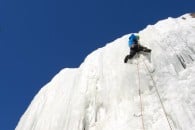

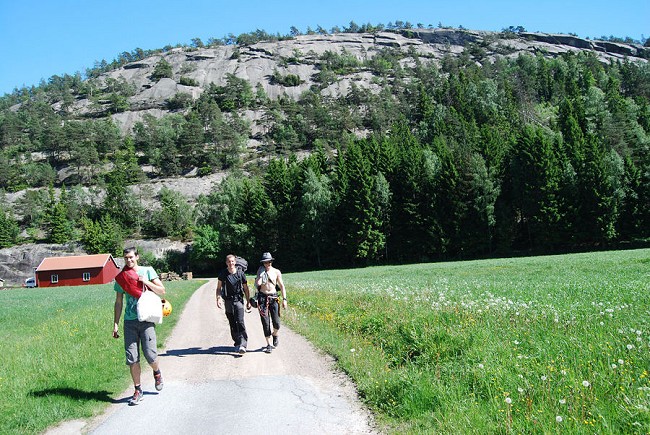
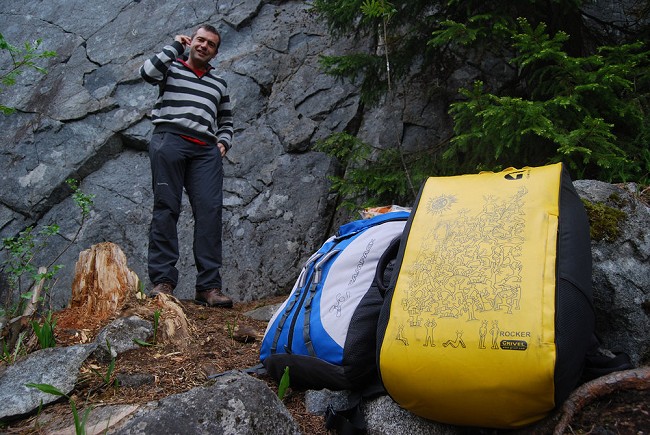
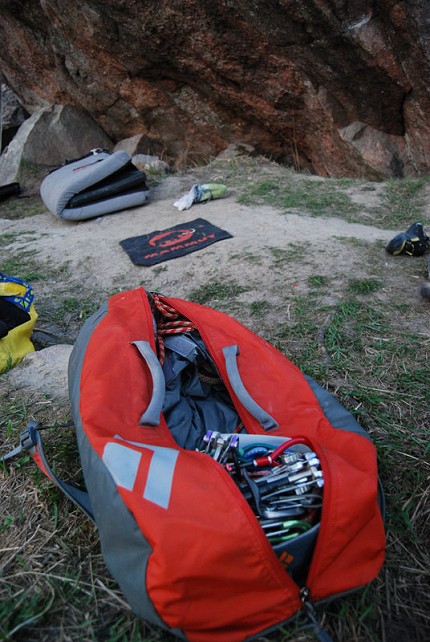
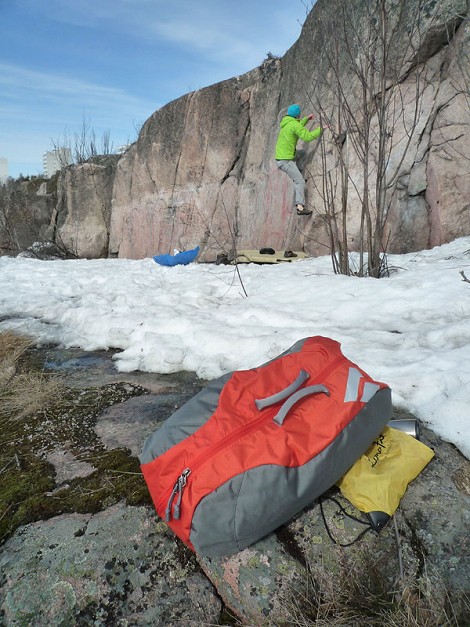

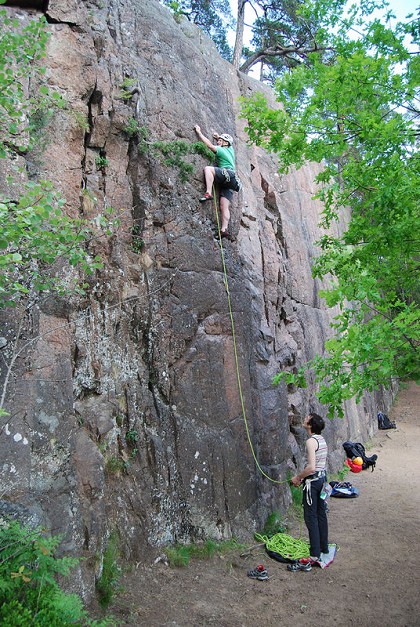
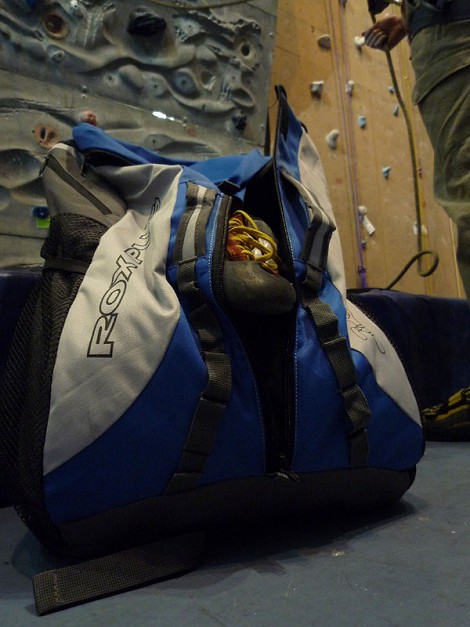
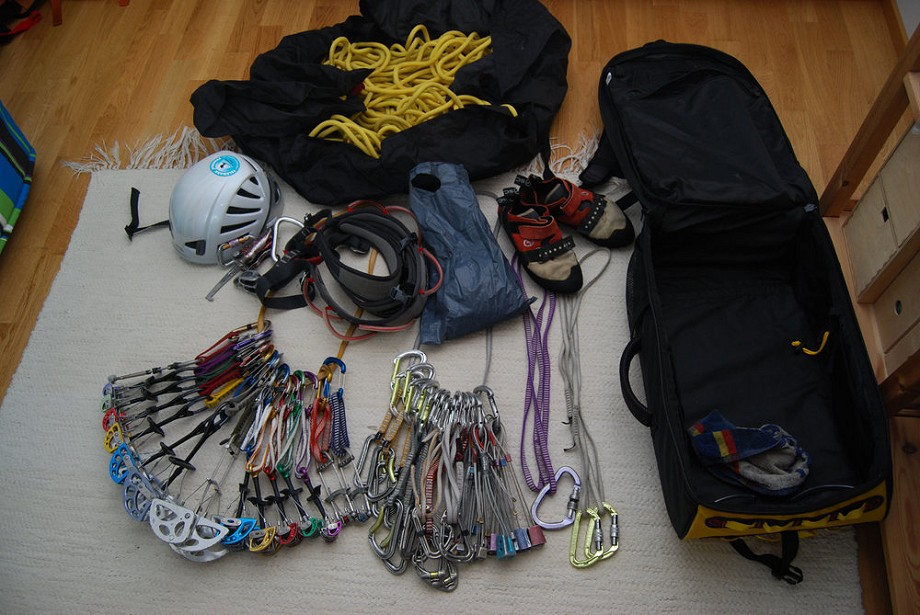
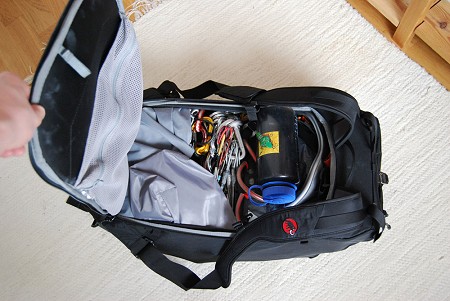
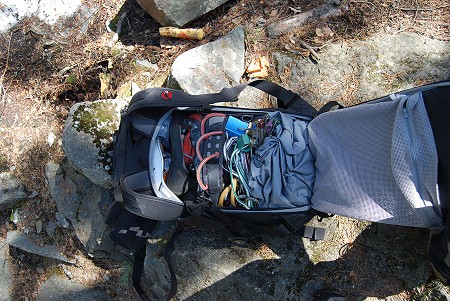
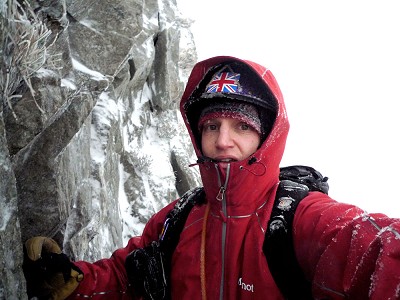
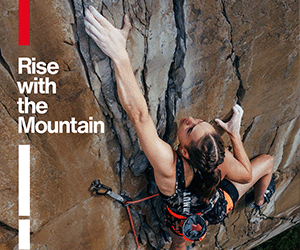

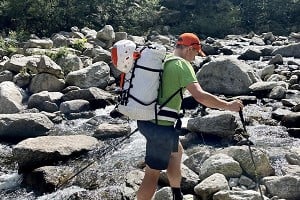

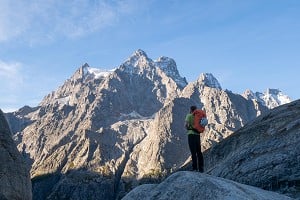
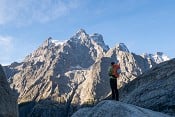


Comments